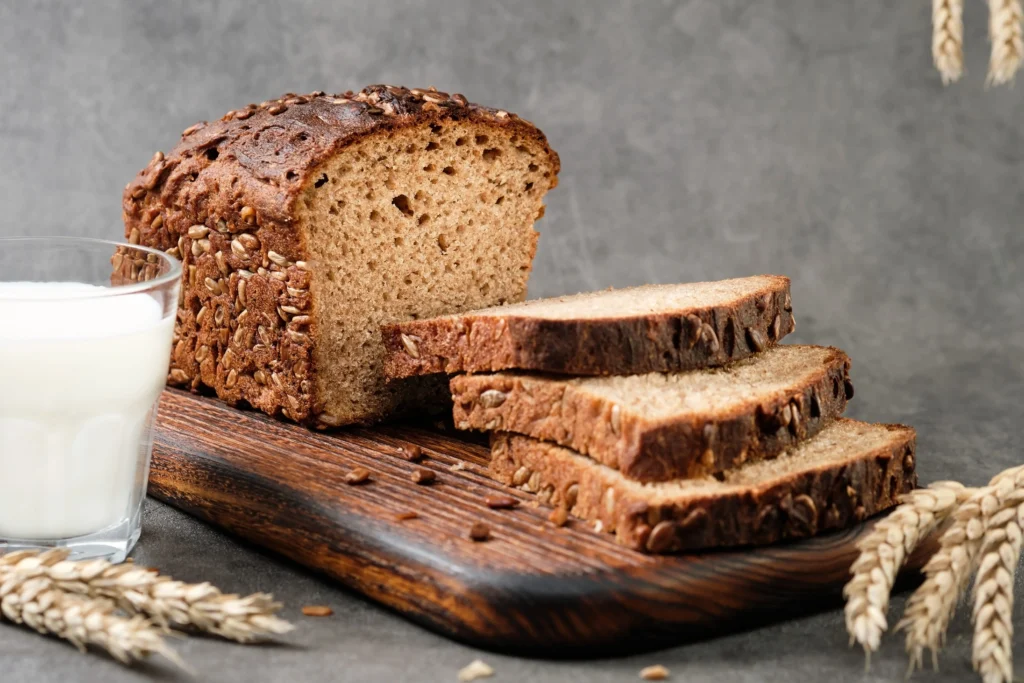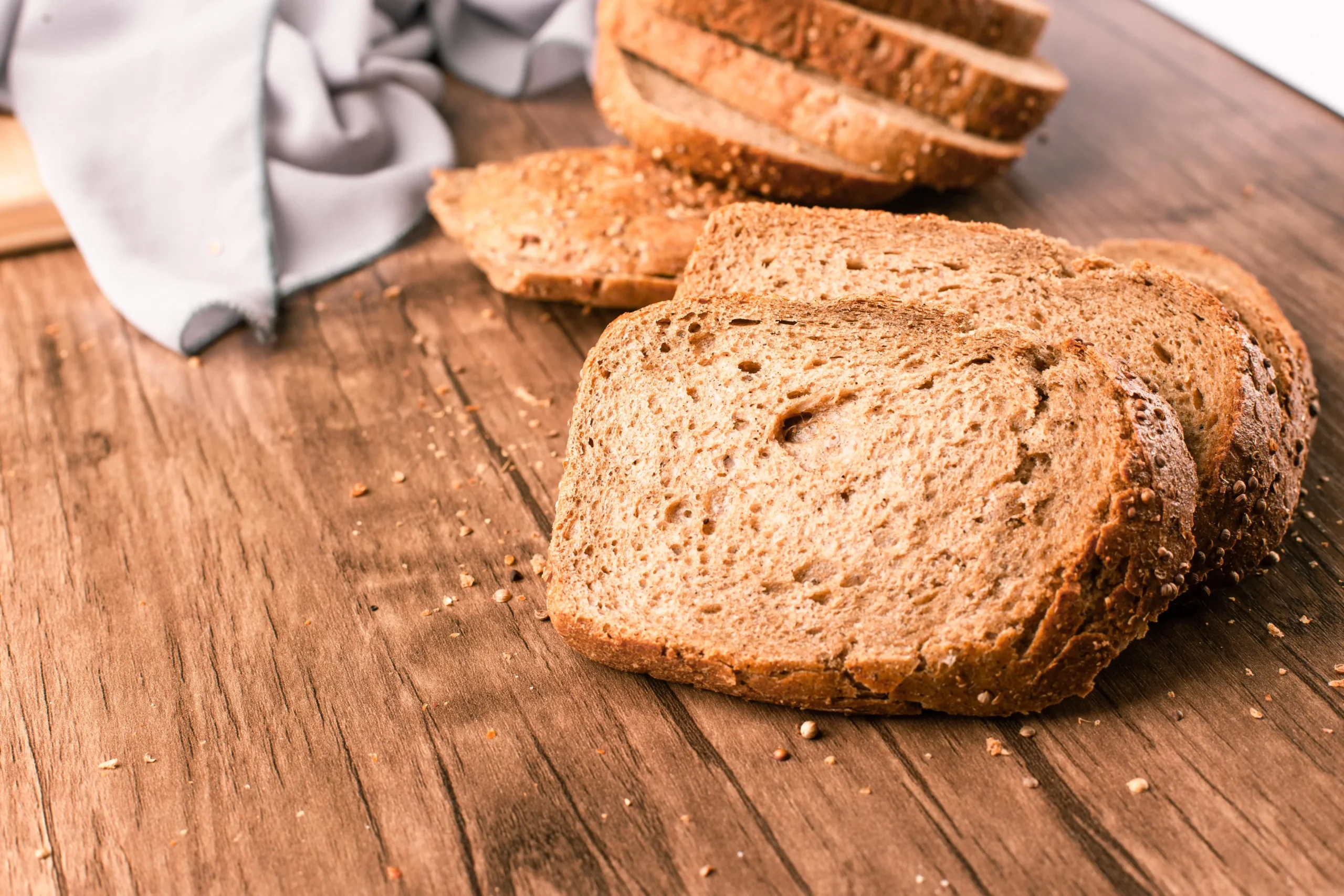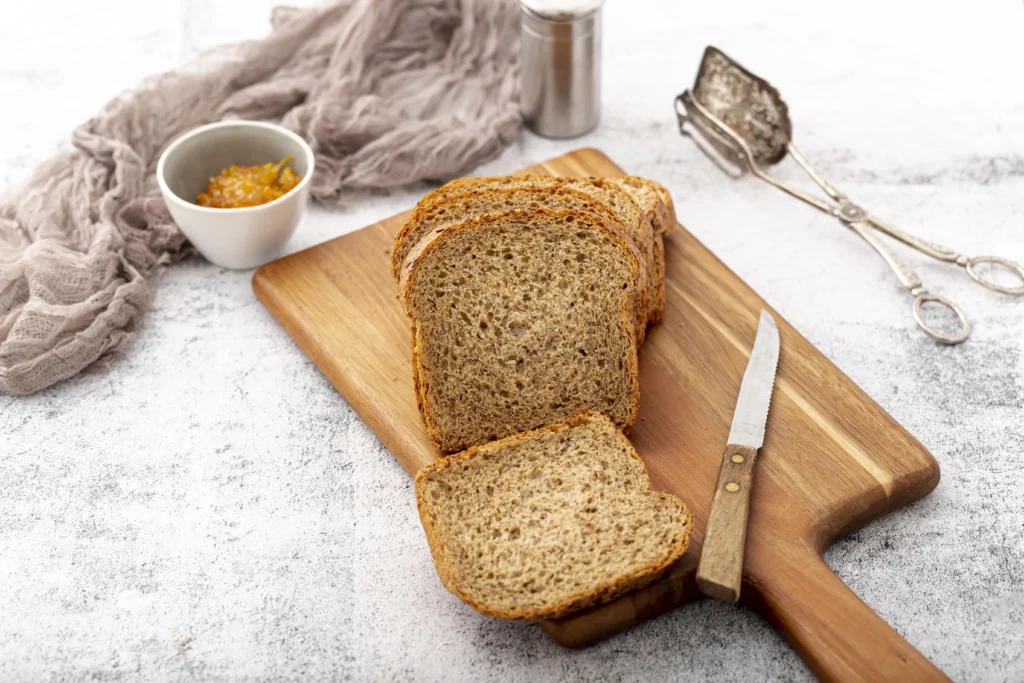Introduction to Sourdough Quick Bread Recipes
Understanding Sourdough Bread
Sourdough bread is a marvel of baking that dates back centuries. It’s unique in that it doesn’t rely on commercial yeast for rising. Instead, it uses a sourdough starter – a fermented mixture of flour and water. This starter contains wild yeast and beneficial bacteria, which not only cause the dough to rise but also impart a characteristic tangy flavor. The beauty of sourdough lies in its simplicity and the complex flavors developed through fermentation.
Benefits of Sourdough Over Regular Bread
Opting for sourdough over regular bread brings a host of benefits, making it a preferred choice for many:
- Enhanced Digestibility: The long fermentation process of sourdough breaks down gluten, making it easier to digest than standard bread.
- Rich Nutritional Profile: Sourdough fermentation increases the availability of nutrients like B vitamins and antioxidants.
- Low Glycemic Index: Sourdough has a lower glycemic index compared to regular bread, leading to a more gradual increase in blood sugar levels.
- Unique Flavor and Texture: The lactic acid produced during fermentation gives sourdough its distinctive tangy taste and a chewy texture that’s hard to replicate in other bread types.
- Natural Preservation: The acidic nature of sourdough helps to naturally preserve the bread, reducing the need for artificial preservatives.
- Versatility in Baking: Sourdough can be adapted to various types of flours and hydration levels, offering a wide range of textures and flavors.
Overview of Quick Bread Recipes
Quick bread recipes are a modern twist to traditional sourdough, designed for those who seek the unique taste and health benefits of sourdough but with a shorter preparation time. These recipes:
- Simplify the Sourdough Process: By reducing the complexity and steps involved in traditional sourdough recipes, they make the process more approachable for beginners.
- Maintain Authentic Taste and Texture: Despite the shortened process, these recipes do not compromise on the authentic
sourdough flavor and texture that enthusiasts love.
- Adaptability to Time Constraints: They are perfect for bakers who can’t commit to the long fermentation times of traditional sourdough, fitting seamlessly into a busy lifestyle.
- Variety and Creativity: Quick bread recipes allow for a range of variations, from adding different flours and flavors to experimenting with various shapes and sizes.
- Accessibility for Home Bakers: These recipes require minimal special equipment, making them accessible to anyone with a basic kitchen setup.
Essential Ingredients and Tools for Sourdough Quick Bread
Key Ingredients for Sourdough Bread
The quality of sourdough bread heavily depends on the ingredients used. Here’s a detailed look at each essential component:
- Flour Types:
- Bread Flour: High in protein, it’s ideal for developing strong gluten networks, resulting in a chewy texture.
- Whole Wheat and Rye Flours: These add nutritional value and a distinct flavor but can make the dough denser.
- All-Purpose Flour: A versatile option, though it may not yield as chewy a texture as bread flour.
- Water:
- Temperature: Lukewarm water is ideal to activate the starter without killing the yeast.
- Quality: Use filtered water if your tap water is heavily chlorinated, as chlorine can inhibit yeast growth.
- Salt:
- Flavor Enhancer: It not only adds taste but also strengthens the gluten structure.
- Types: Fine sea salt is preferred for its purity and even distribution in the dough.
- Sourdough Starter:
- The Heart of Sourdough: A fermented mix of flour and water, full of natural yeasts and bacteria.
- Maintenance: Regular feeding (discarding part of the starter and replenishing it with fresh flour and water) is crucial for its activity and health.
Tools and Equipment Needed
The right tools can significantly ease the process of making sourdough bread:
- Mixing Bowls:
- Size: Large enough to accommodate the dough as it rises.
- Material: Glass or stainless steel are preferred for their non-reactive nature.
- Dutch Oven or Baking Pots:
- Why Essential: They trap steam during baking, creating a crispy crust and soft interior.
- Alternatives: Baking stones or steels can also be used, though they might require additional methods to create steam.
- Measuring Tools:
- Digital Scale: For precise measurements, crucial in baking.
- Measuring Cups and Spoons: For less precise measurements, like salt and starter.
Preparing Your Kitchen for Sourdough Baking
A well-prepared kitchen is key to a smooth baking process:
- Workspace: Ensure a clean, spacious area for kneading and shaping your dough.
- Organization: Have all ingredients and tools within easy reach to streamline the baking process.
- Temperature Control: A consistent, warm environment (around 70°F or 21°C) is ideal for fermentation and proofing.
- Hygiene: Maintain cleanliness to prevent unwanted bacteria from contaminating your sourdough starter and dough.
Step-by-Step Guide to Making Sourdough Quick Bread
Creating the Perfect Sourdough Starter
The foundation of any sourdough bread is a robust starter. Here’s how to cultivate and maintain it:
- Initiating the Starter:
- Mixing: Combine equal parts of whole grain flour (rye or whole wheat) and water. Whole grains contain more nutrients and enzymes, aiding the fermentation process.
- Consistency: Aim for a thick, paste-like consistency.
- Feeding Routine:
- Daily Feeding: Add equal parts of flour and water each day. Use unbleached all-purpose or bread flour for subsequent feedings.
- Observation: Look for bubbles and a volume increase, indicating active fermentation.
- Temperature: Keep it at room temperature (around 70°F or 21°C) for consistent growth.
- Maturity:
- Ready to Use: The starter is ready when it doubles in size within 4-6 hours after feeding and has a pleasant, slightly sour smell.
Mixing and Kneading the Dough
- Combining Ingredients:
- Proportions: Mix your active starter with flour and water. The ratio often used is 1 part starter, 2 parts water, and 3 parts flour.
- Incorporating Salt:
Add salt after initially mixing the other ingredients. Salt can inhibit yeast activity, so it’s best added once the dough has had some time to hydrate.
- Kneading Process:
- Minimal Kneading: Sourdough doesn’t require extensive kneading. Gentle folding and stretching are often enough to develop gluten.
- Autolyse: Allow the dough to rest after initial mixing, usually for about 30 minutes to an hour. This step hydrates the flour and begins gluten development without additional work.
First Rise: Bulk Fermentation
- Fermentation Time:
- Duration: This can range from 3 to 12 hours, depending on room temperature and starter activity.
- Dough Development: The dough should grow in size, become slightly puffy, and show bubbles on the surface.
- Environmental Factors:
- Temperature: Ideal fermentation occurs around 75°F (24°C). If your kitchen is cooler, expect a longer rise time.
Shaping and Second Rise
- Gentle Shaping:
- Handling the Dough: Turn the dough onto a lightly floured surface and shape it gently to preserve the air bubbles.
- Shaping Techniques: Round (boule), oval (batard), or any shape you prefer.
- Second Rise:
- Proofing Baskets: Use a floured proofing basket or a bowl lined with a floured towel to hold the dough’s shape.
- Duration: Typically lasts about 1 to 2 hours, until the dough is puffy but not necessarily doubled in size.
Baking and Cooling
- Oven Preparation:
- Preheating: Preheat your oven with the Dutch oven inside to around 450°F (232°C) for at least 30 minutes before baking.
- Baking Process:
- Scoring: Just before baking, score the top of the dough with a sharp blade or lame. This allows the bread to expand evenly.
- Steam: Place the dough into the preheated Dutch oven. The enclosed environment creates steam, which contributes to a crispy crust.
- Baking Time: Bake with the lid on for about 20-30 minutes, then remove the lid and continue baking until the crust is golden brown.
- Cooling:
- Resting Time: Allow the bread to cool on a wire rack for at least an hour before slicing. Cutting into hot bread can result in a gummy texture.
Variations and Creative Recipes for Sourdough Quick Bread
Classic Sourdough Quick Bread Recipe
A timeless recipe that serves as a great starting point for those new to sourdough baking:
- Ingredients:
- Active Sourdough Starter: 150 grams
- Warm Water: 350 grams
- Bread Flour: 500 grams
- Salt: 10 grams
- Procedure:
- Mixing: Combine starter and water, then gradually add flour and salt.
- Bulk Fermentation: Allow the dough to rise until doubled in size.
- Shaping and Second Rise: Shape the dough and let it rise in a floured banneton or towel-lined bowl.
- Baking: Bake in a preheated Dutch oven until the crust is golden and the loaf sounds hollow when tapped.
Innovative Variations
Expanding on the classic recipe, these variations add unique flavors and textures:
- Adding Flavors and Ingredients:
- Herbs and Spices: Incorporate rosemary, thyme, or garlic for a savory twist.
- Seeds and Nuts: Add sunflower seeds, sesame seeds, or chopped walnuts for crunch and nutrition.
- Cheese and Olives: Fold in grated cheese or chopped olives for a Mediterranean flavor.
- Different Shaping Techniques:
- Baguettes: Shape the dough into long, thin loaves for a classic French touch.
- Dinner Rolls: Divide the dough into smaller portions and bake as individual rolls.
- Focaccia: Flatten the dough in a tray, add toppings like cherry tomatoes and onions, and bake for a delightful Italian-style bread.
Sourdough Quick Bread for Special Diets
Adapting sourdough recipes to cater to various dietary needs:
- Gluten-Free Options:
- Gluten-Free Flours: Use a blend of gluten-free flours like rice, buckwheat, and almond flour.
- Psyllium Husk: Acts as a binder in the absence of gluten.
- Vegan Variations:
- Vegan Starter: Ensure your starter is maintained with vegan-friendly ingredients.
- Plant-Based Add-Ins: Incorporate vegan cheeses or plant-based milks for different flavors and textures.

Advanced Techniques and Expert Tips for Sourdough Quick Bread
In this section, we delve into advanced techniques and expert tips to elevate your sourdough quick bread baking skills. This comprehensive guide is designed for those who have mastered the basics and are ready to take their sourdough to the next level.
Perfecting the Sourdough Starter
- Optimizing Fermentation: Learn to read your starter’s cues. A ripe starter should be bubbly, have a pleasant sour aroma, and should pass the float test in water.
- Temperature Tweaks: Experiment with storing your starter in different environments to see how it affects fermentation. A warmer spot speeds up fermentation, while a cooler spot slows it down.
Hydration Ratios and Their Impact
- Understanding Hydration: Hydration, the ratio of water to flour in your dough, significantly affects the bread’s texture. Higher hydration leads to a more open crumb and a lighter loaf, but is trickier to handle.
- Adjusting Hydration: Start with a lower hydration dough and gradually increase as you become more comfortable with shaping and handling wetter doughs.
Advanced Shaping and Scoring Techniques
- Refining Shaping Skills: Practice different shaping techniques like batards, boules, and baguettes to add variety to your baking.
- Scoring Creatively: Scoring isn’t just functional; it’s an art. Experiment with different patterns and depths to control how your bread expands and to add an artistic touch.
Mastering the Bake
- Oven Spring Maximization: To achieve the best oven spring, ensure your oven is adequately preheated and learn to create steam effectively.
- Using Baking Stones and Steels: For a more consistent heat source, consider using a baking stone or steel. These tools can provide a more even bake and better crust development.
Flavor Development and Experimentation
- Incorporating Whole Grains: Add whole grains like rye or spelt for deeper flavors and nutritional benefits.
- Long Cold Fermentation: Experiment with retarding the dough in the refrigerator. This can develop more complex flavors in your bread.
Sourdough Beyond Bread
- Diverse Recipes: Use your sourdough starter in other recipes like pancakes, waffles
, and crackers. This not only adds a unique flavor but also helps in utilizing excess starter.
- Sourdough Discard Recipes: Don’t throw away your discard! Use it in recipes for cakes, biscuits, and even homemade pasta for a tangy twist.
Troubleshooting Common Issues
- Dense Crumb: This could be due to under-proofing, over-kneading, or not enough steam during baking. Learn to adjust proofing times and oven settings.
- Cracking Crust: If your bread cracks unpredictably, it might be due to inadequate scoring or too hot an oven.
- Sourdough Starter Health: A healthy starter is the key to good sourdough bread. If your starter isn’t performing well, review your feeding routine and environment.
Engaging with the Sourdough Community
- Joining Forums and Groups: Engage with online sourdough communities for support, recipe sharing, and troubleshooting tips.
- Attending Workshops: Participate in sourdough baking workshops or classes to learn hands-on from experienced bakers.
Continuous Learning and Experimentation
- Documenting Your Bakes: Keep a baking journal to note down variations in recipes, techniques, and outcomes. This can be a valuable tool for understanding what works best in your kitchen.
- Experimenting with Fermentation Times: Play around with longer or shorter bulk fermentations and proofing times to see how they affect the flavor and texture of your bread.
Frequently Asked Questions and Answers
Does Instant Sourdough Work?
Yes, instant sourdough works as a convenient and quick alternative for those who want to enjoy sourdough-like bread without the time and effort involved in maintaining a traditional sourdough starter. However, it lacks the depth of flavor and unique texture characteristic of bread made with a naturally fermented sourdough starter.
Is It Cheaper to Make Your Own Sourdough Bread?
Yes, it is generally cheaper to make your own sourdough bread. While there’s an initial investment in ingredients and possibly some baking tools, the cost per loaf is typically lower than buying artisan sourdough bread from a bakery. Flour, water, and salt, the primary ingredients for sourdough, are relatively inexpensive, especially when bought in bulk. Additionally, maintaining a sourdough starter is cost-effective, as it only requires flour and water.
Can You Make Sourdough with Just Flour and Water?
Yes, you can make sourdough bread with just flour and water. These two ingredients are all that’s needed to create a sourdough starter, which is a mixture of flour and water left to ferment naturally. This fermentation captures wild yeast and bacteria from the environment, causing the mixture to rise and develop the unique flavors and textures characteristic of sourdough bread. While salt is often added to the dough for flavor and to control yeast activity, the essential leavening process relies solely on flour and water.
What Is the Secret to Good Sourdough Bread?
The secret to good sourdough bread lies in a combination of factors: a well-maintained, active sourdough starter for natural leavening and flavor; proper dough hydration and gluten development for the right texture; precise timing and temperature control during fermentation for flavor development; gentle handling and shaping of the dough to retain gas and structure; and adept baking techniques, including steam generation and temperature management, for a perfect crust and crumb. Patience and practice are also key, as sourdough baking is an art that improves with experience.
conclusion
In conclusion, mastering sourdough bread making is a rewarding journey that blends art and science. While it may seem daunting at first, understanding the key elements – from maintaining a healthy sourdough starter to mastering fermentation, dough handling, and baking techniques – can lead to the creation of exceptional sourdough bread. The process not only yields delicious results but also offers the satisfaction of crafting something truly unique with your own hands. With patience, practice, and a willingness to learn, anyone can become proficient in the art of sourdough baking, enjoying the rich flavors and textures that only this traditional method can offer.
You May be interested also about :
Gary’s Quick Steak Recipes


